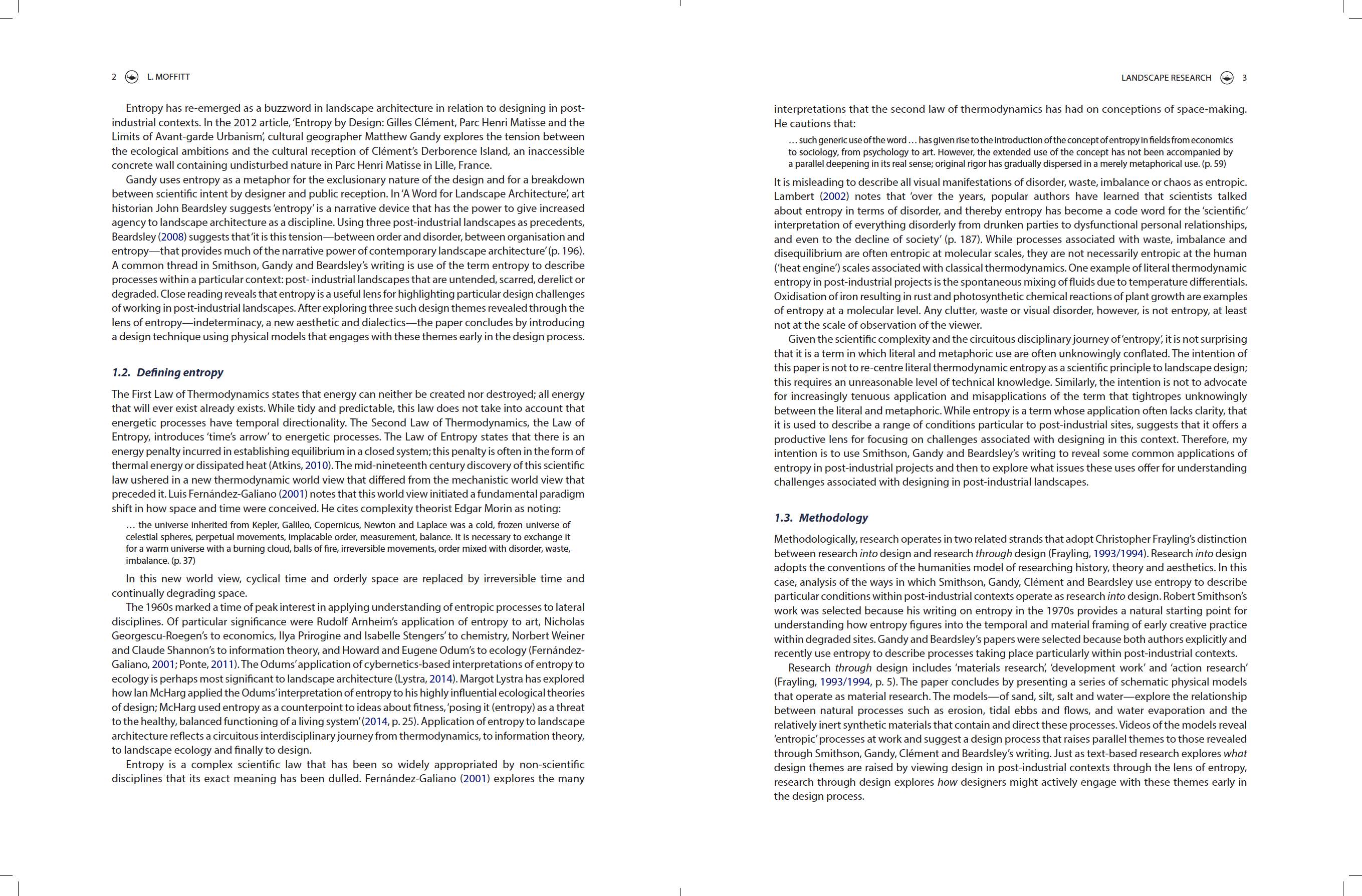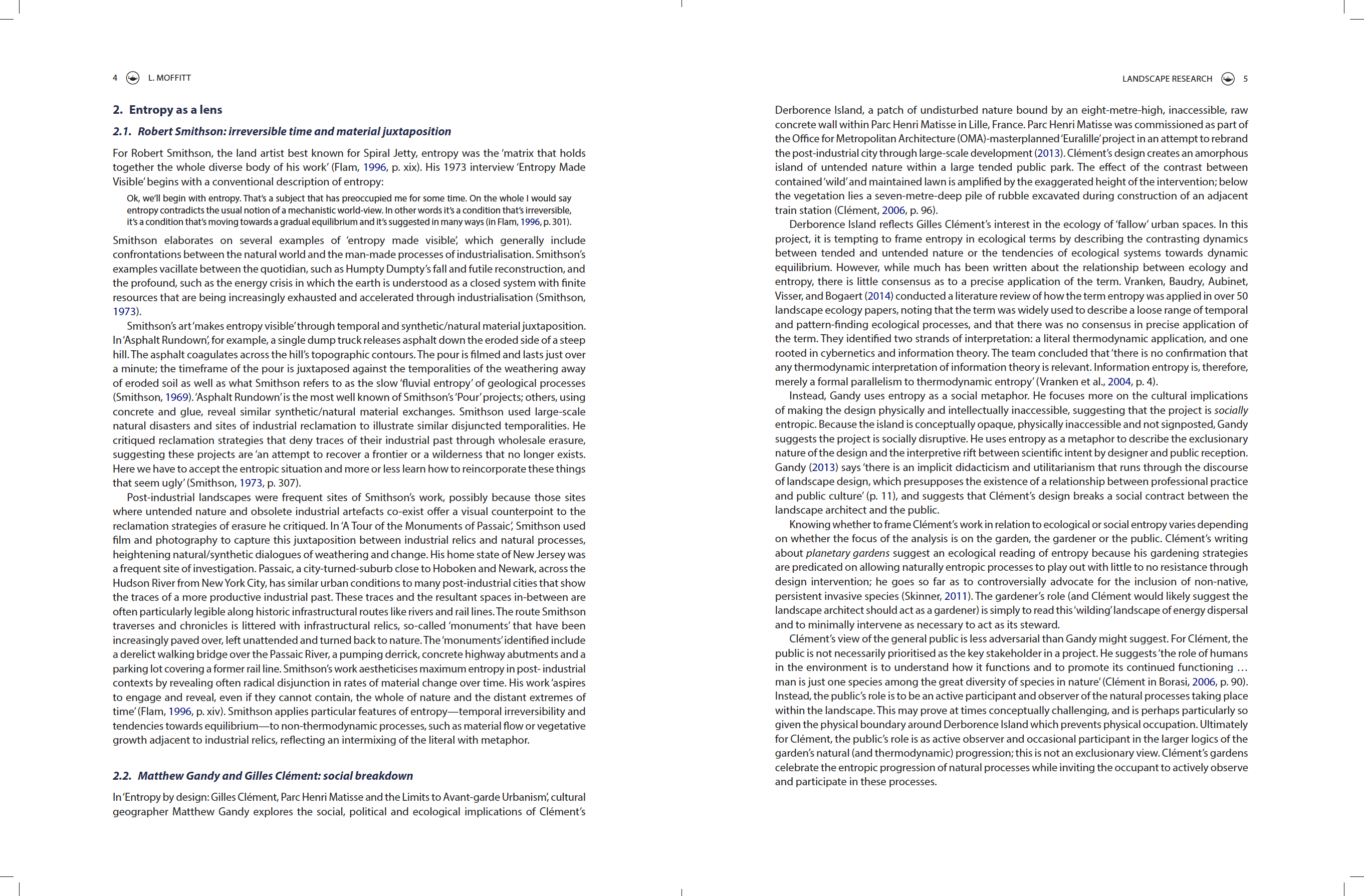Sand, Silt, Salt, Water: Entropy as a Lens for Design in Postindustrial Landscapes

Landscape Research, vol. 42, 2017
Entropy is a contemporary buzzword in landscape architecture used to describe a vast range of material, environmental and social processes. Most uses of the word are loose appropriations of a very specific thermodynamic principle. This paper first explores some of the more common applications of entropy to describe post-industrial case study projects explored by Robert Smithson, Matthew Gandy, Gilles Clément and John Beardsley. It then suggests that entropy is a lens for understanding particular challenges associated with designing in landscapes that bear the traces of past industrial occupation. It concludes by offering a design technique using physical models of salt crystallisation, sand dispersal, sedimentation and water flow, for engaging with these themes as part of the design process. The paper suggests that viewing post-industrial sites through the lens of entropy raises productive design questions and that the indeterminacies of entropic processes are analogous to productive indeterminacies in the design process.






